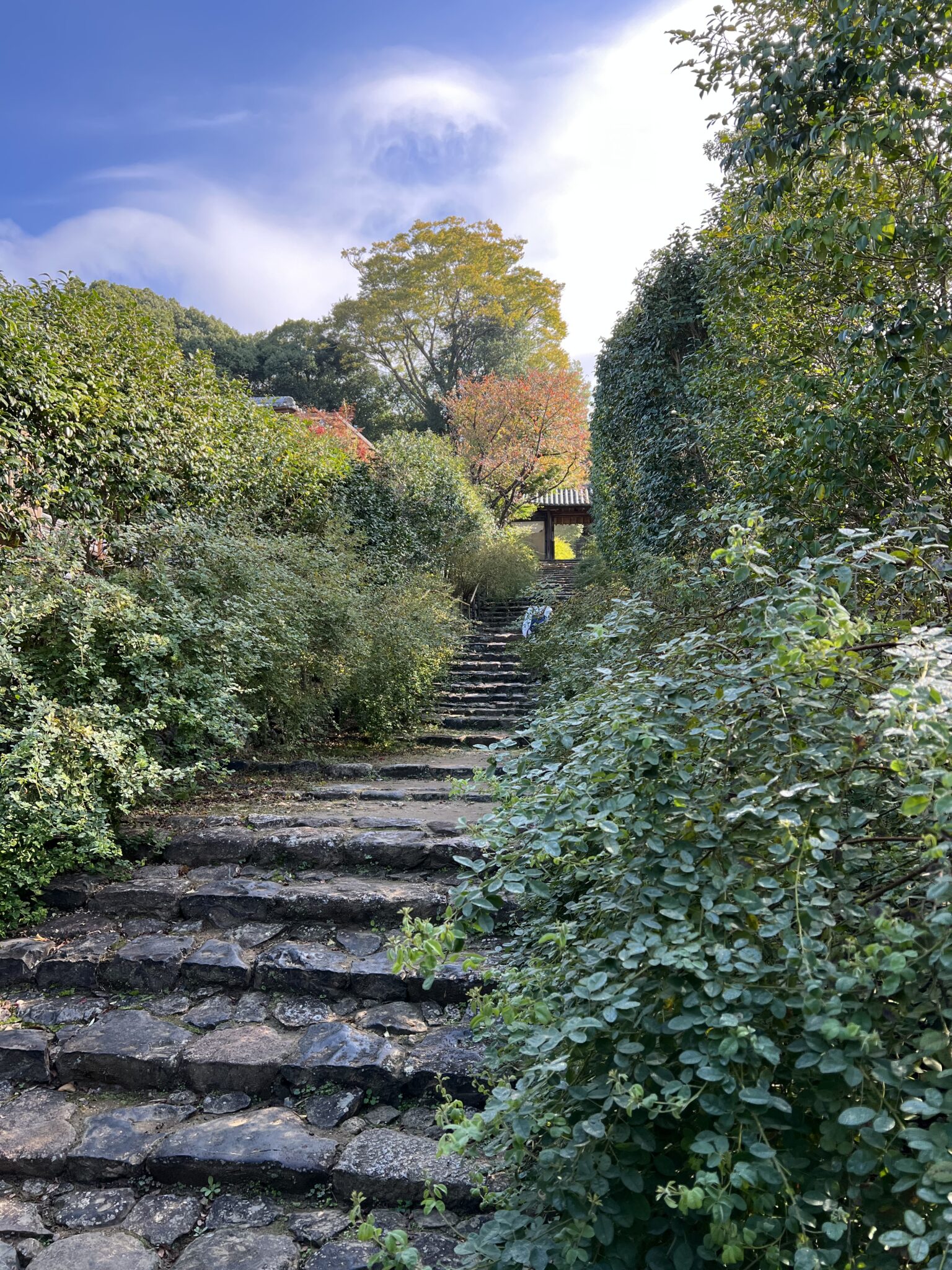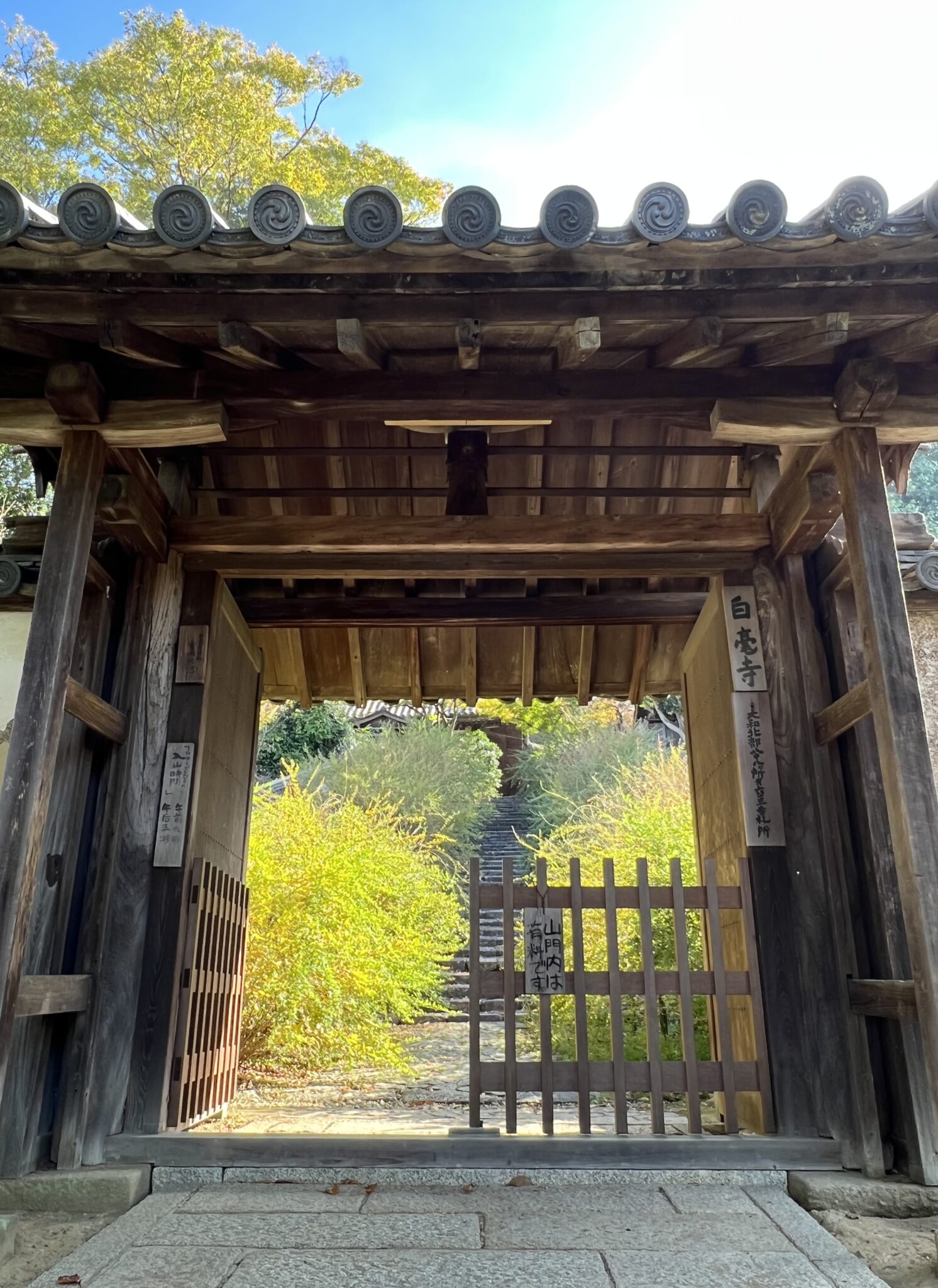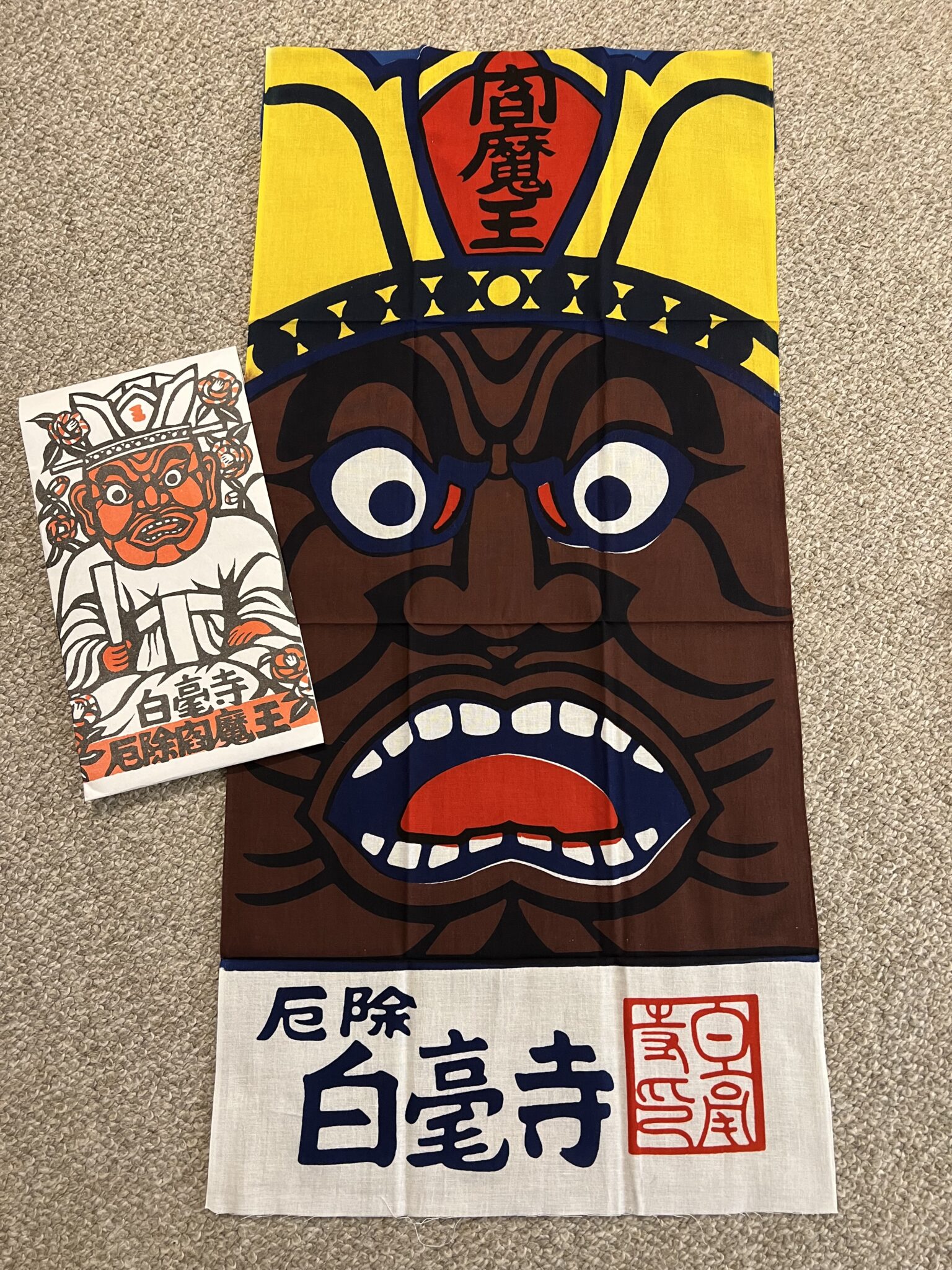I first visited Byakugōji in early November, after the bush clover(Hagi) season had ended. A friend had posted on social media about the long stone steps leading up to the rustic temple gate, with many bush clovers gracefully hanging down on either side. It was so beautiful that I wanted to visit it myself. While I thought I might be able to walk from Nara Park to somewhere like Shin-Yakushiji, Byakugōji is further southeast, so it might be a bit difficult to walk there.
By the way, “byakugō” refers to the small dot between the Buddha’s eyebrows. It is actually a long, white hair, coiled clockwise, and when uncoiled, it is said to be around 4 to 5 meters long(!)
Access
It is located at the foot of Mount Takamado, which lies to the southeast of central Nara City, south of Mount Kasuga.
If you’re coming from around Nara Park or Kintetsu Nara Station, you can take the loop bus (Junkan bus)and get off at “Takabatakecho,” followed by about a 20-minute walk. It’s probably about the same distance if you walk from Shin-Yakushiji. The area around Byakugōji still has many old houses with yellow earthen walls that look as though they might crumble at any moment, giving it a very charming atmosphere. There is a large white sign that reads “The Temple with a Beautiful View of Flowers, Byakugōji,” making the entrance easy to find. From there, a short climb up the stone steps will lead you to an old stone stairway that stretches straight up to the temple gate. On both sides, bush clovers grow thickly, and their simple, yet beautiful appearance enhances the sense of anticipation as you approach. After passing through the gate and climbing a few more steps, you’ll find a reception desk on the left, where you can pay the entrance fee to enter the temple grounds.
Be sure to turn around and look back at the path you just climbed. You’re guaranteed a lovely view.

History
According to legend, this area where Byakugōji stands was once the mountain villa of Prince Shiki (668?–716), a son of Emperor Tenji, during the Wadō era of the Nara period. Within the temple grounds, there is a monument engraved with a poem by Prince Shiki, which is said to describe the very scenery of the foot of Mount Takamado. If you stand in front of this monument, you’ll see Mount Takamado behind it, and in a straight line beyond that lies the tomb of Prince Shiki.
The poem reads: “In the fields of Takamado, the autumn bush clovers bloom and scatter in vain, for there is no one to see them.” (Man’yōshū, Volume 2, Poem 231)
Prince Shiki was the seventh son of Emperor Tenji. After the Jinshin War, the imperial succession passed to the line of Emperor Tenmu, allowing Prince Shiki to live a life relatively free from political involvement. He was deeply engaged in cultural pursuits, particularly waka poetry, and his delicate poems can be found in the Man’yōshū. However, during a major shift in history, the line of Emperor Tenmu ended, and 54 years after Prince Shiki’s death, his son, Prince Shirakabe, ascended the throne as Emperor Kōnin in 770 at an advanced age. Since Emperor Kōnin was the father of Emperor Kanmu, who moved the capital to Heian-kyō, the current Imperial Family can be considered direct male-line descendants of Prince Shiki. It appears that Prince Shirakabe’s family owned a residence in the area where Byakugōji now stands.
The exact origins of Byakugōji are unclear, but it is believed to have been revived by Eison, a monk who revitalized many temples, including Saidaiji, in the 13th century. Later, Dōshō brought a complete set of Buddhist scriptures to the temple and built a sutra repository within Byakugōji, which is why it was also known as “Issaikyō-ji” (The Temple of All the Scriptures).
Temple Ground
The temple grounds are spacious and quiet, allowing for a leisurely visit. Since the temple is located at the foot of Mount Takamado, which is connected to Mount Kasuga, you can enjoy a panoramic view of the city of Nara spreading out to the west. On clear days, the view is breathtaking, with the Great Buddha Hall visible in the distance to the right and Mount Ikoma directly in front. Perhaps because I visited early in the morning, I was able to see the grounds being meticulously swept clean.
Although it was November, the season with the fewest flowers, the temple is known for its seasonal blooms: the “Goshiki Camellia,” one of Nara’s three famous camellias, from late March to mid-April; bush clovers from late September to early October; and winter cherry blossoms from late October to December, and again in mid-March.
Though many fires and wars have occurred here, leaving no ancient structures, the temple still features buildings such as the main hall, the image hall, and the treasure house.

Principal Image
Seated Statue of Amida Nyorai (Late Heian to Kamakura Period)
Important Cultural Property
Made of joined hinoki wood blocks
Other Treasures
Wooden Seated Statue of Enma Daio or King Yama (Kamakura Period)
Wooden Seated Statue of Taizan King (Kamakura Period)
It has been identified as the work of Kōen, the grandson of Unkei, based on an ink inscription found inside the statue.
Offerings
Tenugui towel with an impressive image of King Yama
This tenugui (Japanese hand towel) seems to be a popular item and is often sold out. I heard from the woman at the information desk that the craftsman who had been making these tenugui for many years recently retired, and they started ordering from a new place. However, she mentioned that the dyeing on some of them hasn’t turned out well. When I asked if I could buy a tenugui on my way out, she said they had some of the new ones available, so I bought a few.

Flowers
Late March to mid-April: The “Goshiki Camellia,” one of Nara’s three famous camellias
Late September to early October: Bush clovers along the stone steps leading to the temple gate
Late October to December, and around mid-March: Winter cherry blossoms

